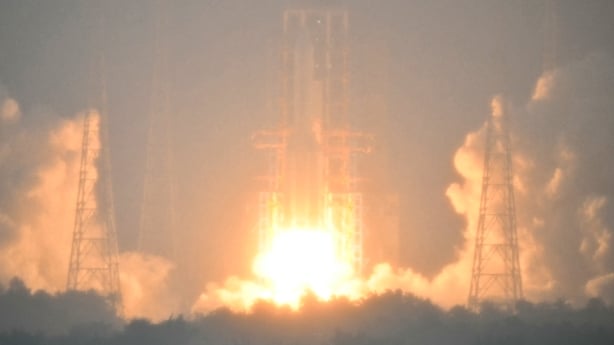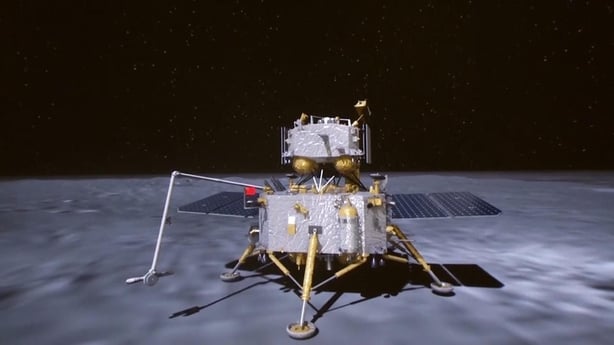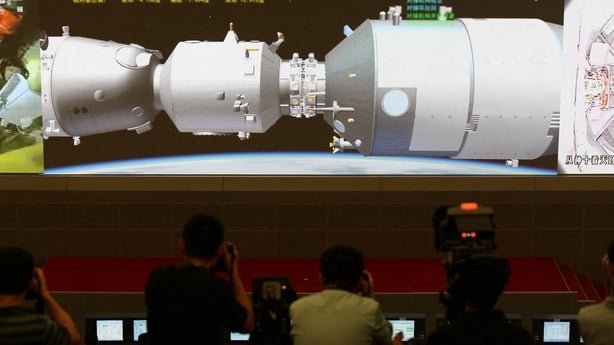The ascender module of a Chinese lunar probe has successfully taken off from the far side of the Moon carrying samples to be taken back to Earth, state media reported.
The achievement is a world first, and the latest leap for Beijing's decades-old space programme, which aims to send a crewed mission to the Moon by 2030.
The ascender module of the Chang'e-6 probe "lifted off from lunar surface", state news agency Xinhua said, citing the China National Space Administration (CNSA).
It described it as "an unprecedented feat in human lunar exploration history".
"The mission has withstood the test of high temperature on the far side of the moon," the CNSA said.
It added that after lift off, the module "entered a preset orbit around the moon".
We need your consent to load this rte-player contentWe use rte-player to manage extra content that can set cookies on your device and collect data about your activity. Please review their details and accept them to load the content.Manage Preferences
The Chang'e-6 module touched down on Sunday in the Moon's immense South Pole-Aitken Basin, one of the largest known impact craters in the solar system, according to the CNSA.
The probe's technically complex 53-day mission began on 3 May.

The Chang'e-6 features two methods of sample collection including a drill to collect material under the surface and a robotic arm to grab specimens above the surface.
After successfully gathering its samples, "a Chinese national flag carried by the lander was unfurled for the first time on the far side of the moon," Xinhua said.

Scientists said the Moon's dark side, so-called because it is invisible from Earth, not because it never catches the sun's rays, holds great promise for research because its craters are less covered by ancient lava flows than the near side.
Material collected from the far side may shed better light on how the Moon initially formed.
'Space dream'

Plans for China's "space dream" have been put into overdrive under President Xi Jinping.
Beijing has provided huge resources to its space programme over the past decade, targeting a series of ambitious undertakings in an effort to close the gap with the two traditional space powers - the United States and Russia.
It has achieved several notable achievements, including building a space station called Tiangong or "heavenly palace".
Beijing has landed robotic rovers on Mars and the Moon, and China is only the third country to independently put humans in orbit.
But Washington has warned that China's space programme is being used to mask military objectives and an effort to establish dominance in space.
China aims to send a crewed mission to the Moon by 2030 and plans to build a base on the lunar surface.
The United States is also planning to put astronauts back on the Moon by 2026 with its Artemis 3 mission.

